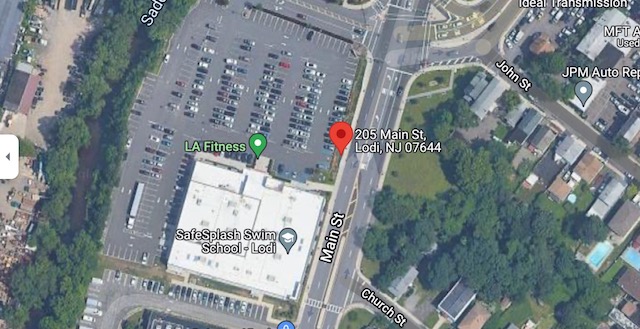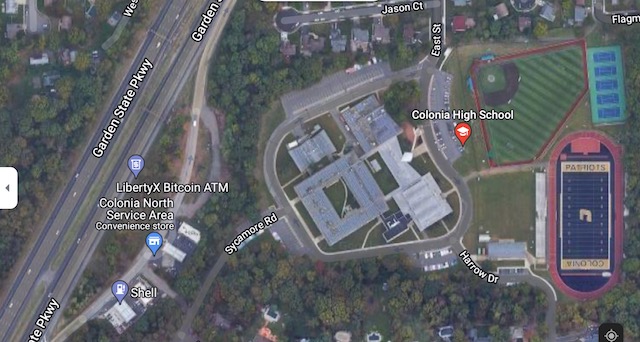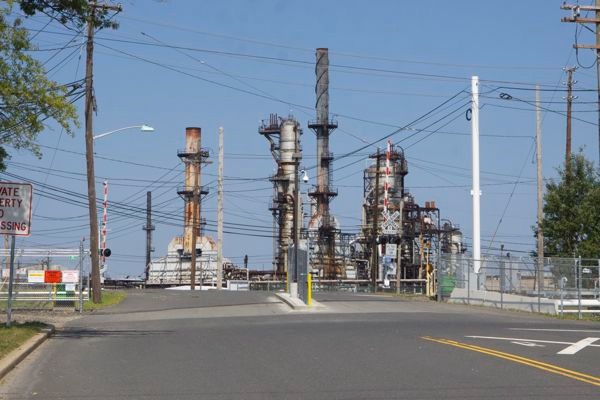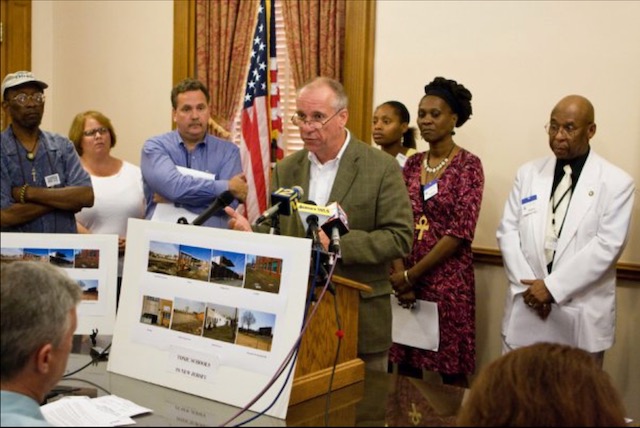Pinelands Commission Erects Barriers To Petition To Strengthen Wildfire Development Standards
Commission Avoiding Public Discussion Of Lax Wildfire Safety Land Use Standards
Current Rules Allow New Development In “Extreme” Wildfire Risk Areas
At a time when Murphy DEP Commissioner LaTourette is testifying to the Legislature and holding press events highlighting the extreme risks of wildfire in the Pinelands (and spending millions of dollars of taxpayer money suppressing those risks), why does the Pinelands CMP allow new development in “extreme” wildfire risk areas?
[Update below]
According to the Pinelands Commission’s March 2022 Monthly Management Report, staff rejected my petition for rulemaking seeking amendments to the Comprehensive Management Plan (CMP) to strengthen wildfire protections:
- Amendment petition: The Commission received a petition from Bill Wolfe to amend the CMP on March 9, 2022. The petition, which was also submitted to the New Jersey Highlands Council and NJDEP, requests that all three agencies enact development restrictions in certain wildfire hazard areas. By letter dated March 23, 2022, staff notified the petitioner that pursuant to N.J.A.C. 7:50-7.3(b) and 7.5, additional information would need to be submitted to complete the petition.
The scientific and policy rationale in support of the petition is included in the petition and a discussion of it can be found here:
The Commission’s rejection of the petition conflicts with the Department of Environmental Protection’s (DEP) acceptance of the petition.
DEP accepted the petition, but, like the Pinelands Commission, they tried to avoid public discussion of the issues it raised, see:
The Commission’s Monthly Report failed to note the specific reasons they found the petition incomplete and what additional information needed to be provided.
The Monthly Report also failed to note that I immediately objected to the staff’s rationale for rejecting the petition because it violated the NJ Administrative Procedure Act (Act) by creating burdensome and illegal barriers to citizen involvement in the regulatory process, in direct contradiction of the legislative intent and letter of the Act.
The Commission staff’s March 9, 2022 letter (provided upon request) was a typical bureaucratic evasion.
It is very obvious that the Commission and staff simply do not want to publicly talk about or defend their current CMP policies on wildfire risks, which allow new development in high wildfire hazard areas.
Those lax standards allow totally inappropriate new development in extremely high wildfire risk forests (see CMP at: PART XII-FIRE MANAGEMENT, more specifically: 7:50-6.124 Fire hazard mitigation standards
7:50-6.121 Purpose
Forest vegetation represents a significant wildfire threat to structures developed within the Pinelands. Therefore all development in the Pinelands shall conform to the requirements of this Part in order to protect life and property from catastrophic forest fires and to ensure the maintenance of the Pinelands forest ecosystems.
At a time when DEP Commissioner Latourette is testifying to the Legislature (2/10/22) and holding press events highlighting the extreme risks of wildfire in the Pinelands (and spending millions of dollars of taxpayer money suppressing those risks), why does the Pinelands CMP allow new development in “extreme” wildfire risk areas?
[Update: 4/8/22 – The Highlands Council has public noticed the petition:
Notice of Rule Petition
Subject: Adopt Rules Limiting or Prohibiting Development in Certain Wildfire Hazard Areas; Mandating Retrofit of State-of-the-Art Fire Prevention Practices on Existing Development in Certain Wildfire Hazard Areas; and Requiring Monitoring and Reporting of Emissions of Air Pollutants from Wildfires and Prescribed Burns
Petitioner: Bill Wolfe
Petition Recevied: 3/9/22, Petition Document (pdf)
Register Publication: 4/18/22, Notice of Receipt of Petition for Rulemaking (pdf)
For those that like to get into the weeds, here is my response to staff’s letter. I would welcome any legal support, including a pro bono lawyer to sue the Commission over this unacceptable violation of the Act:
Ms. Roth and Grogan – Thank you for your response.
As you know, I filed my joint petition to the Pinelands Commission, the Highlands Council, and the DEP based on the legislative standards and procedures prescribed by the NJ Administrative Procedures Act.
Reliance solely on the legislative standards and procedures in the Act was intentional.
As you also know, those agencies all have different, inconsistent, duplicative, and contradictory regulatory provisions for implementing that Act. One objective of my petition was to avoid such irrational and burdensome requirements and ideally get multiple State agencies in alignment on basic science and policy and administrative procedures.
As you may know, the DEP accepted the subject petition and it will be published in the NJ Register on April 18, 2022, see:
https://www.nj.gov/dep/rules/petition/pet20220309nor.pdf
I have not yet received a response from the Highlands Council. [see update above]
Upon cursory review of your “incomplete” determination, the regulatory requirements prescribed by Commission regulations you cite appear to be substantively broader, more restrictive, and burdensome than the specific substantive statutory requirements established pursuant to the NJ Administrative Procedure Ac (Act).
The Act delegates authority to agencies to adopt regulations regarding the form and procedural requirements for regulatory petitions.
The Act does NOT authorize agencies to established substantive requirements. The substantive content of any agency regulations must be based on the statutory content standards of the Act.
The Act also does not authorize agencies to impose substantive requirements that are broader or more burdensome than the specific legislative standards regarding the content of a petition.
Fundamental principles of statutory interpretation suggest that Commission regulations may not be substantively broader or more burdensome than the authority delegated by the Legislature in the Act.
Several of the provisions you cite are not relevant or appropriate to the substantive content of my petition, which dealt with broad CMP land use science and policy matters, not site specific or parcel specific CMP designations. They are therefore applied arbitrarily and capriciously, and in a manner that impedes meaningful public involvement in CMP regulations, which is contrary to the intent of the Act.
Finally, the Commission’s regulations you cite are onerous and frustrate the legislative intent of the Act, which is to promote and enable citizen participation in the regulatory process.
In conclusion, your “incomplete” determination is based on CMP regulations that are ultra vires, arbitrary, capricious and beyond the scope of your authority. Additionally, the decision itself lacks specificity and is so vague as to violate certain due process rights.
I urge you reconsideration of your “incompleteness” determination, or at least a more reasoned and substantively justified consideration and decision-making before taking “final agency action” on the subject petition.
I look forward to your timely and favorable reply to the above.
ADDENDUM:
The Act provides:
“Each agency shall prescribe by rule the form for the petition and the procedure for the submission, consideration and disposition of the petition. The petition shall state clearly and concisely:”
The words “form and “procedure” do not include adoption of detailed substantive requirements – or any requirements beyond the scope of the 3 factors specified in the Act, which are limited to:
“(1) The substance or nature of the rule-making which is requested;
(2) The reasons for the request and the petitioner’s interest in the request;
(3) References to the authority of the agency to take the requested action.”
My petition clearly meets these statutory standards and your “incomplete’ determination does not deny that it does.
Instead, you rely on CMP regulations.
Nowhere does the Act authorized the burdensome regulatory procedures you cite.
The Act does not authorize the Commission to make an “incomplete” determination.
Here is the procedure for responding to the petition – there is no option for “incomplete”:
“Within 60 days following receipt of any such petition, the agency shall either; (i) deny the petition, giving a written statement of its reasons; (ii) grant the petition and initiate a rule-making proceeding within 90 days of granting the petition; or (iii) refer the matter for further deliberations which shall be concluded within 90 days of referring the matter for further deliberations.”
The Act gives you 3 options. “Incomplete” is not one of them.










